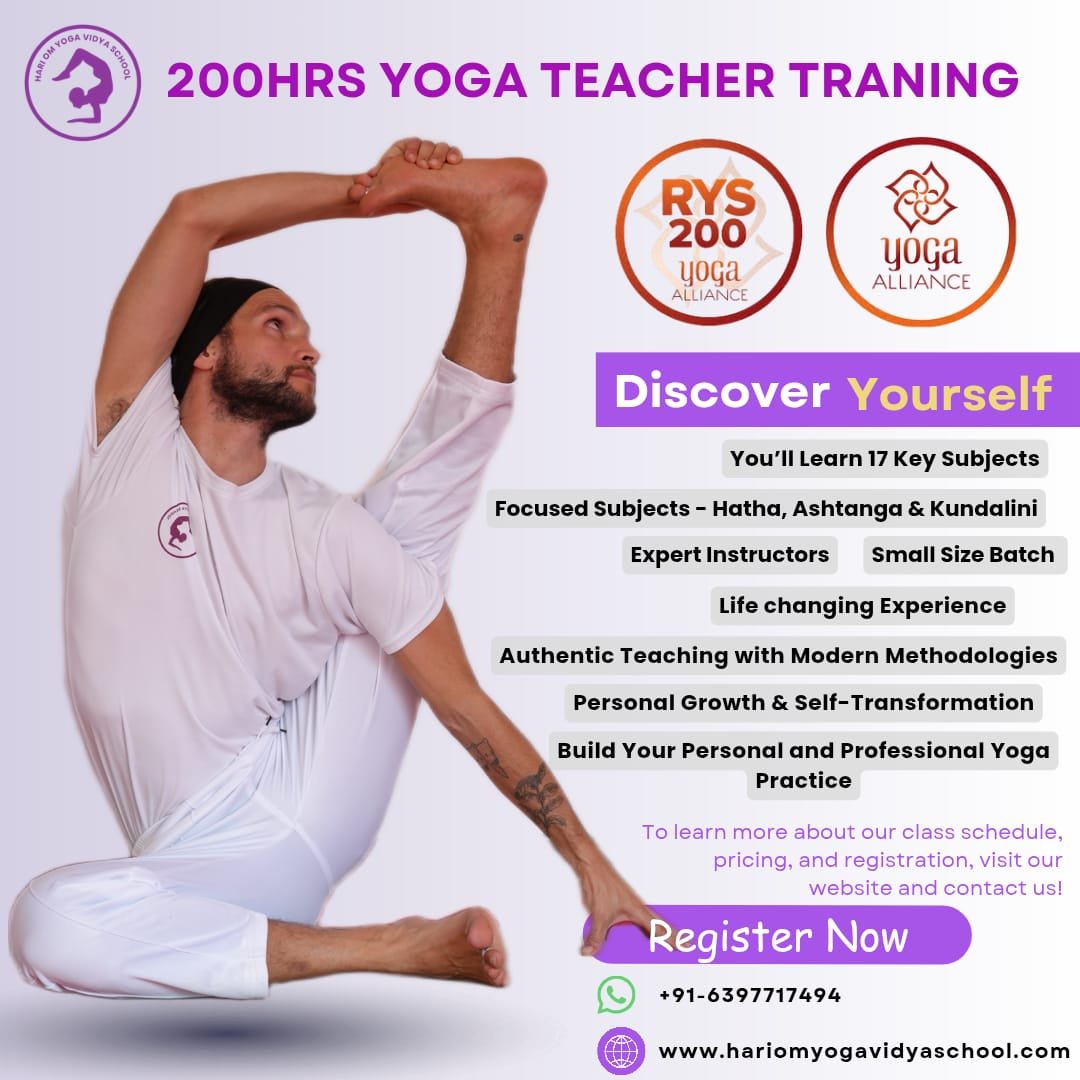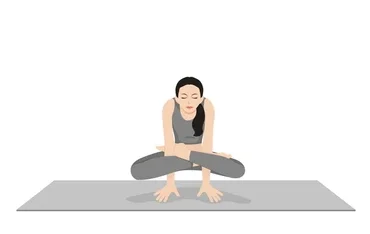Kukkutasana – Rooster Pose
What is Kukkutasana?
Kukkutasana is one of the advanced poses in Ashtanga Yoga, which is also quite popular as the Rooster pose. If you are into home workouts,Kukkutasana is just great for you. You will need some time, to master the pose. It is a part of the later asanas of the Ashtanga Primary series. Moreover, you require balance and strength to hold the posture. You can make it a part of your arm balance yoga asanas.
You can trace the name to the Sanskrit texts, where the name can be broken down as:
- Kukkuta means ‘cockerel’ or ‘rooster’
- Asana means ‘posture’
There are many such yoga poses that are named after birds. They embody the different qualities of the birds. A rooster or a cockerel mainly represents Yang energy or male energy. Hence, you can relate it to the connection of the practitioner with his or her masculine energies.
How To Do The Kukkutasana?
- You can start the asana, by sitting in the lotus pose, or Padmasana.
- Bring your arms and insert them straight, in between the thighs and calves.
- You have to remember to keep your fingers open, when you are placing the palm on the ground.
- You have to lift the body, by gently exerting pressure on the ground, with your open palms.
- Focus on your entire body, which will aid you to gently lift the body up.
- Stay in this position for 1-2 minutes, while inhaling and exhaling normally.
- When you are ready to return to the starting position, you have to gently lower the body and then straighten out the legs.
- Remember to keep breathing, so that you can relax and rejuvenate as well.
- You should repeat the asana for a second time, when you are doing the asana for the very first time. Repeat the asana and try to increase the hold time to 5 minutes, in the initial days of your practice, to get the maximum benefits.
Modifications and Variations of Kukkutasana
- You can keep thin, folded blankets on your thighs if you do not have a good grip of your legs in the cross -legged or padmasana pose.
- If you are scared of losing balance, while doing the asana or pose, then you can keep a bolster right in front of you. In case, you fall, you can take support from it.
There are various variations which you can try. They are Garbha Pindasana, or the Embryo in the womb pose. It is basically a rolling version of the asana.
Read More: Why Is Kundalini Yoga Dangerous? The Truth About Its Risks and Rewards
Additionally, you can also do the Urdhva Kukkutasana, where the hands are not inserted but they are placed beside the thighs. Then you have to get into Padmasana and raise the body.
Parsva Kukkutasana is another option for you.
You have to breathe normally and hold the pose for 5 breaths in the final cross-legged pose. Your gaze should be towards the Third eye.
Safety Precautions Decoded
Everybody should keep the safety and precautions in mind, while practicing the pose. This is an advanced arm-balance pose that requires a lot of arm strength and core strength.
- To get into the arm balance pose, you need to fix your gaze on any object in front of you. This gaze will help you to stay afloat, when you are balanced on your arms.
- If you find it difficult to insert the hands from in between the legs, in the cross-legged pose, you should apply oil to the inner forearms, thighs, and calves.
- You should remember not to lean forward, while doing the asana. If you do so, you might fall off.
- When you are raising the hips upwards from the floor, you must engage in Mula bandha.
Who Can Do Kukkutasana and Who Cannot?
If you have a fairly good body constitution, you can do this pose. Moreover, advanced level practitioners, who have strong hands and core muscles, can also do the pose easily. For all the others, keep the below points in mind.
- If you feel any sort of pressure or pain, you have to stop your practice almost immediately.
- If you are suffering from hip injuries, knee injuries, back injuries, or ankle injuries, you should not do the asana.
- If you recently had any spinal cord ailments, then you must avoid this asana altogether.
- Those with either high or low blood pressure, should also avoid the asana.
- If you are suffering from Carpal Tunnel Syndrome, Gastric Ulcers, or any knee or elbow injuries, you should not do the asana.
- Those with enlarged spleen, must not do this asana.
- If you are pregnant or menstruating, you must not practice the asana.
Benefits of Kukkutasana
If you can master this pose, it opens up a lot of possibilities for your wellbeing. The benefits are listed underneath in detail for you.
- It can help in the strengthening of the arms, open the chest and diaphragm area and also tightens the core muscles.
- It can lead to loss of belly fat, if you do it regularly.
- When you do the asana, it can lead to a gentle massage on the belly. Your organs will start performing at their best. Kukkutasana can solve many complex digestive issues.
- The hormonal secretions also increase manifold, so you gain immensely from the asana.
- The elasticity of the muscles increase, and so does the blood flow. When the muscles get a regular supply of oxygenated blood, their performance also increases ten-fold.
- It also stimulates the reproductive organs, to perform in a much better manner. Thus, your sexual performance also increases.
- When you do the asana, the performance of the kidneys also increase manifold.
- It is one of the best asanas, for the performance of the heart. As the flow of blood throughout the organs and the body increases, so does the heart’s performance. This asana also minimizes the stress and strain on the heart muscles.
- You can also get your Kundalini activated, through the proper practice of this asana. It starts from the Muladhara and goes up to the spine, to ensure the best performance. W
Deepen Your Yoga Practice with Hari Om Yoga Vidya School
Located in the heart of Rishikesh, Hari Om Yoga Vidya School is a place where ancient yogic wisdom meets modern teaching techniques. As a top yoga school in Rishikesh, we are committed to providing authentic, immersive yoga education in a peaceful, spiritual setting. Recognized as one of the best yoga schools in Rishikesh, we offer structured training programs designed to help you evolve in your practice, whether you are a beginner or an experienced yogi.
If you’re searching for a yoga school in Rishikesh that focuses on holistic learning, experienced teachers, and a supportive community, look no further!
Read More: Everything You Need to Know About Kundalini Yoga Teacher Training
Explore Our Yoga Teacher Training & Retreats
At Hari Om Yoga Vidya School, we offer a range of courses tailored for different levels of practitioners:
✅ 100-Hour Yoga Teacher Training in Rishikesh – A foundational course for those looking to begin their yoga journey.
✅ 200-Hour Yoga Teacher Training in Rishikesh – An internationally recognized certification for aspiring yoga teachers.
✅ 300-Hour Yoga Teacher Training in Rishikesh – Advanced training to deepen your practice and refine your teaching skills.
✅ 7-Day Yoga Retreat in Rishikesh – A rejuvenating escape into yoga, meditation, and self-discovery.
✅ 10-Day Yoga Retreats in Rishikesh – A transformative experience that blends yoga, relaxation, and Himalayan serenity.
Join us for a life-changing experience and become part of our global yoga family! 🌿✨





